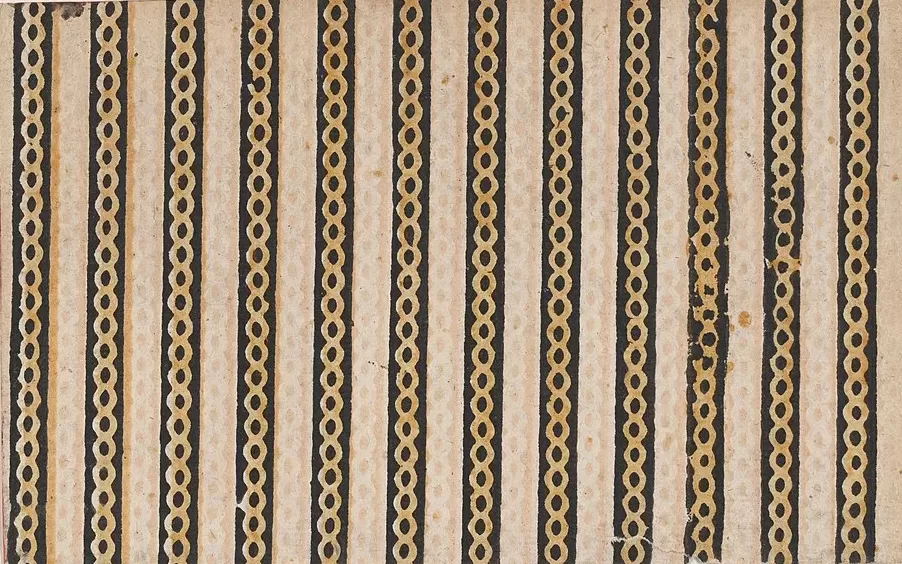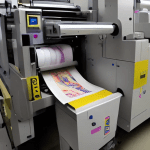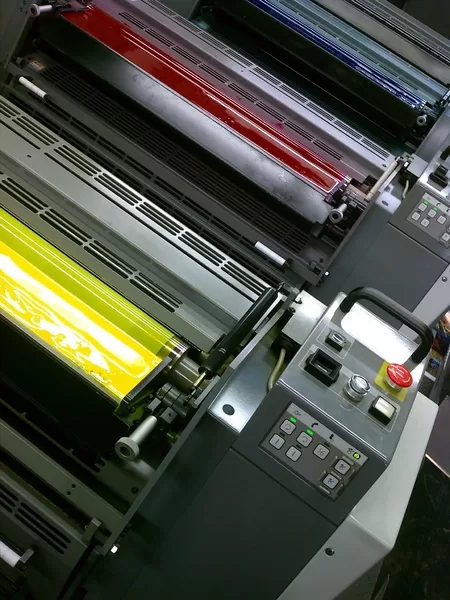This article is part of the FLEXO FLAW FIXING series
Achieving flawless flexo prints is a delicate balance of art and science. A common defect that challenges this balance is the appearance of “vertical streaks” on printed materials. These vertical lines or bands impair the visual consistency of prints and contrast with “horizontal streaks“, each of which has different causes and effects. Understanding the nuances between these defects and addressing the multifaceted causes of vertical streaks is critical to maintaining high quality output in flexo printing.
Unlike horizontal streaks, vertical streaks run parallel to the direction of web travel. And they are often related to the components and conditions that influence the longitudinal distribution of ink or substrate properties. Horizontal streaks, on the other hand, span the width of the web and typically result from problems with the cross-directional uniformity of ink application, substrate feed or tension. Although they rarely occur simultaneously and their mechanisms and visual results are different, vertical streaks do share several common causes with horizontal streaks.
Causes and Remedies of Vertical Streaks in Flexo Printing
Anilox Roll Problems
- Cause: The anilox roll’s condition is paramount in ink transfer. Worn cells, debris clogging, or volume inconsistency lead to uneven ink distribution, manifesting as vertical streaks.
- Remedy: Implement regular anilox roll cleaning routines using ultrasonic or laser cleaning systems. Regular microscopic inspections can help spot wear or damage early, allowing for timely replacements or repairs.
Plate Issues
- Cause: Printing plates can suffer from wear, damage, or improper mounting, all of which can disrupt ink transfer patterns.
- Remedy: Conduct frequent inspections of plates for signs of wear or damage. Ensure plates are correctly mounted and tensioned. Consider using higher-quality plates that offer better resilience and longer life spans.
Doctor Blade Deficiencies
- Cause: Worn, incorrectly set, or poor-quality doctor blades fail to wipe the anilox roll effectively, causing uneven ink application.
- Remedy: Regularly replace doctor blades and ensure they are correctly aligned and set at the optimal angle and pressure. Experiment with different blade materials and configurations best suited for the ink and substrate in use.
Substrate Quality
- Cause: Variations in substrate quality, including thickness, smoothness, and absorbency, can affect how the ink sets and dries, leading to streaks.
- Remedy: Source high-quality substrates with consistent properties. Pre-treat substrates if necessary to ensure uniform ink absorption and adhesion.
Ink Viscosity and Composition
- Cause: Incorrect ink viscosity and composition can lead to poor transfer and coverage, resulting in vertical streaking.
- Remedy: Regularly monitor and adjust ink viscosity according to the ambient temperature and humidity. Utilise additives as necessary to maintain optimal ink conditions.
Mechanical and Operational Issues
- Cause: Issues such as machine vibrations, improper tension control, or misaligned web paths can all introduce inconsistencies in the printing process, leading to vertical streaks.
- Remedy: Perform regular maintenance and calibrations of the printing press to ensure all components are in optimal working condition. Monitor tension and alignment closely, making adjustments as needed for each job.
Press Speed Adjustments
- Cause: Running the press at incorrect speeds can exacerbate the issue of vertical streaking. Too fast may not allow ink enough time to transfer or dry properly, while too slow can lead to ink pooling.
- Remedy: Fine-tune press speeds based on the job’s specific requirements, balancing productivity with quality to minimise defect risks.
Drying and Curing Parameters
- Cause: Inadequate or uneven drying can result in vertical streaks, as ink may not set properly on the substrate.
- Remedy: Optimise drying or curing parameters for each print job, considering ink type, substrate, and environmental conditions. Ensuring uniform airflow and temperature across the web can help achieve consistent drying.
Summary
In flexographic printing, preventing vertical streaks necessitates a holistic approach, focusing on equipment maintenance, material quality, process control, and continuous improvement strategies. Balancing these elements allows printers to tackle the multifaceted causes of vertical streaks head-on, ensuring that the final prints meet the high standards demanded by customers. Through rigorous attention to detail and proactive problem-solving, achieving consistent, high quality prints free from vertical streaks is an attainable goal for flexographers.
The printing industry continues to evolve with technological advancements. Thus, staying abreast of new solutions is essential for minimising defects and optimising print quality. Embracing innovation, whether through advanced materials, machinery, or software, offers additional pathways to address the persistent challenge of vertical streaks, further demonstrating the dynamic and progressive nature of flexographic printing.
By tackling the root causes of vertical streaks through targeted remedies and best practices, flexographic printers can significantly enhance their output quality, reduce waste, and maintain competitive edge in a demanding market. The journey towards perfection in printing is ongoing, with each defect addressed bringing printers one step closer to achieving their ultimate goal of flawless production.


![[Flexo Flaw Fixing] Horizontal Streaks Transverse Stripes in flexo](https://flexopedia.net/wp-content/uploads/2022/07/063_Transverse_Stripes-jpeg-e1703168980304.webp)


